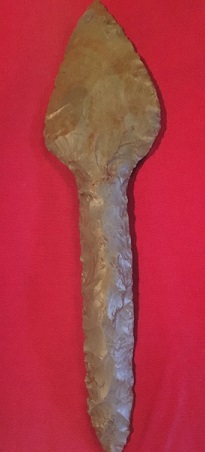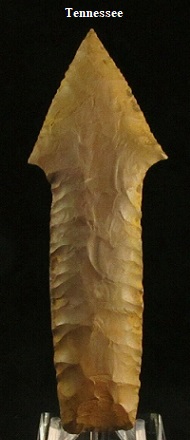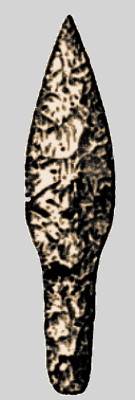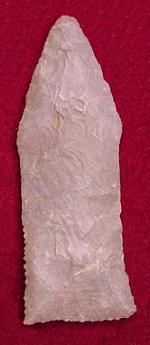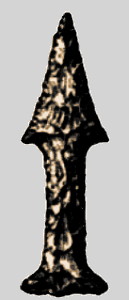Outline is Representative of Size and Shape: 
Name Details:
Identified By: Smithsonian Publications (Fredrick Webb Hodges)
Named For: Primary use
Date Identified: 1911
Type Site:
Identified By: Smithsonian Publications (Fredrick Webb Hodges)
Named For: Primary use
Date Identified: 1911
Type Site:
Point Validity:
Valid type
The first mention of this type was found in the Smithsonia publication by Fredrick Webb Hodges in 1911. However, he references Rau in 1876, Thurston in 1897, and Moorehead in 1900 and states that they have detailed information on this type. Modern professional references to this type are limited which may be due to the rarity of this type. Collector sources have the greatest references to this type.
The first mention of this type was found in the Smithsonia publication by Fredrick Webb Hodges in 1911. However, he references Rau in 1876, Thurston in 1897, and Moorehead in 1900 and states that they have detailed information on this type. Modern professional references to this type are limited which may be due to the rarity of this type. Collector sources have the greatest references to this type.
Dagger Knife
Cluster: Description of Physical Characteristics and Flaking Pattern:
This is a very large stemmed point. The blade may range from excurvate to recurvate with the tip curving in and flaring back out at the shoulders. The shoulders are at an upward angle. The stem is small and expanding with a convex base. This point has a random flaking pattern.
Size Measurements:
Commonly Utilized Material:
Additional Comments:
The two illustrations are of the two examples discussed by Hodges (1911). The first one was found in Indiana and is 10 inches in length. The other examples was found in Alabama and is 7 inches in length.
The two illustrations are of the two examples discussed by Hodges (1911). The first one was found in Indiana and is 10 inches in length. The other examples was found in Alabama and is 7 inches in length.
Distribution: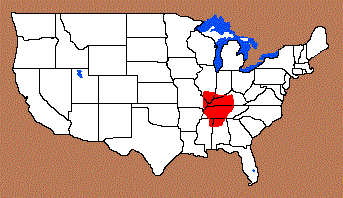
Distribution Comments:
This type is most commonly associated with Tennessee and into Kentucky, but has been found into Indiana and Alabama.
This type is most commonly associated with Tennessee and into Kentucky, but has been found into Indiana and Alabama.
Age / Periods:
Date: 4,000 - 1,500 B.P.
Cultural Period:Late Archaic to Woodland
Glacial Period: Neoglacial to Roman Warm
Culture:
Date: 4,000 - 1,500 B.P.
Cultural Period:Late Archaic to Woodland
Glacial Period: Neoglacial to Roman Warm
Culture:
Age Details:
Other points in this cluster / Related / Associated Points:

